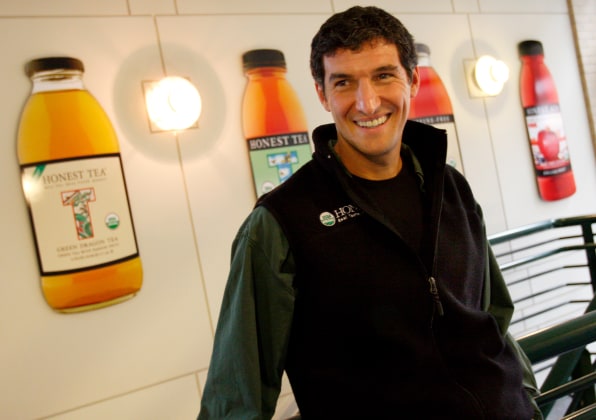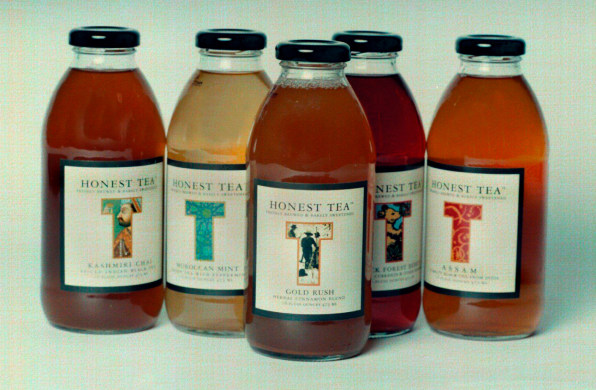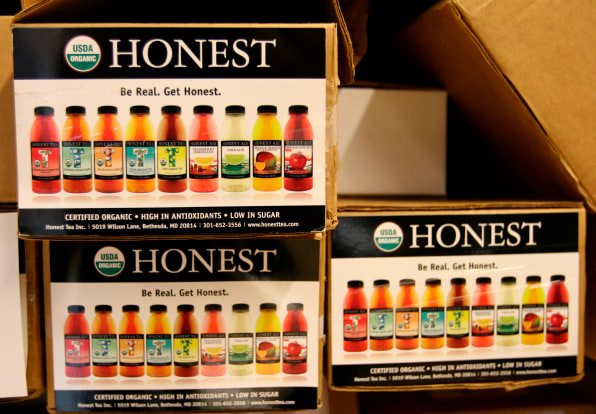The demise of Honest Tea shows how even a successful mission-based brand can fall apart.
“Branded” is a new weekly column devoted to the intersection of marketing, business, design, and culture.
Honest Tea founder Seth Goldman described it as a “gut punch.” This week, the Coca-Cola Co. announced it is killing the brand he created back in 1998.
That’s quite a twist in a story that had long seemed like a case study in how a mission-driven brand built around ethical principles—organic ingredients, Fair Trade Certified partners—could capture a changing consumer zeitgeist, connect with an audience, and go big.

Instead, the brand will be “phased out” of the Coca-Cola Co.’s beverage portfolio at the end of 2022. (It’s keeping a spin-off line of organic juice products called Honest Kids.)
Since selling Honest Tea in a multimillion-dollar deal, Goldman has moved on to help found ethical-food startups Eat the Change and PLNT Burger, and serve as the chair of Beyond Meat’s board. He took to LinkedIn to pay tribute to “the sweat, tears, and incredible passion that went into building our beloved brand.”
Perhaps Honest Tea will still live on as a case study: How an apparently successful mission-driven brand can beat the odds, transcend its niche, find a backer who believes in it, make the transition to the mainstream—and still end up dying.
The origin story is a classic entrepreneurial tale. A young Goldman thirsted for a bottled tea that was flavorful without being overly sweet. It was an era when consumer demand seemed to be trending both healthier and more virtuous, and he hit on the idea of making his product organic. With borrowed money and a lot of hustle, Honest Tea became a solid business. Its vaguely pious name and slightly crunchy brand connected with mindful shoppers in venues like Whole Foods.

When I interviewed Goldman in 2005, the brand had even experimented with tying some of its offerings to specific causes or nonprofits, with mixed results. Instead, the business was refocusing on creating broadly appealing, “accessible” flavors. (Peach Oo-La-Long was a hit, for instance.) “We’ve probably had periods where we kind of overemphasized the mission,” he told me. At the time, the company was working to reach a wider array of customers.
Still, some observers were startled—and skeptical—when, in 2008, Honest Tea sold a 40% stake to Coca-Cola for $43 million. Samuel Fromartz, author of Organic Inc. and other books, at the time wrote on his blog that while the deal presumably opened up new distribution opportunities, it meant “getting into bed with the people who put high fructose corn syrup on the map. You’re selling equity to the same people you want to displace.”
Goldman countered that he believed his company’s mission and product were good for the entire ecosystem it was part of: workers, consumers, the environment. “If you believe that, then you have a responsibility to sell as much of it as you can,” he said, and the Coke deal would help achieve precisely that goal.

Coca-Cola assumed full ownership of the brand three years later. Goldman stayed involved, and Honest Tea remained in its Bethesda, Maryland, home base. The product itself was never watered down, and as late as 2018 Goldman still saw it as poised for “global growth.” Sales had reportedly risen from $71 million in 2010 to around $600 million.
But the brand’s momentum had slowed. Sales in the first half of 2019 declined 16%, according to Beverage Digest, in the midst of a wider decline in ready-to-drink tea sales.
“Tea was once at the leading edge of the consumer shift to healthier, lower-sugar beverages, offering functional ingredients such as antioxidants,” the publication reported. “Honest Tea was among the brands that capitalized on that trend.”
But the market had gotten far more competitive, and shelves were crowded with functional beverages, cold brew coffees, and antioxidant waters. The consumer zeitgeist that helped propel Honest Tea’s success had shifted. At the end of that year, Goldman left the company to pursue new ventures; Honest Tea’s offices were moved to Atlanta.
Coke, meanwhile, appeared to lose enthusiasm for niche-ier brands in general, according to a 2021 Business Insider report. And in its announcement this week, the company explained the move as a straightforward consolidation of its tea strategy, sacrificing Honest Tea to focus on two more successful lines: Gold Peak, a virtuous-looking bottled tea brand that Coke has backed with nationwide marketing, and Peace Tea, a growing regional offering that has “a loyal, Gen Z following.” Neither hits the various mission-y notes that defined the Honest brand.
This seems like an outcome Fromartz was worried about way back in 2008, and plenty of observers on social media have reacted with some version of: What did you expect?
But of course some mission-driven brands do survive being absorbed into bigger entities. Ben & Jerry’s is probably the best-known example: Unilever has famously allowed the brand to stick to its mission-heavy vibe, taking outspoken stands on social justice and other issues. It’s worth remembering, however, that this does not necessarily limit the Ben & Jerry’s brand: Plenty of consumers just think of it as slightly fancy, often cheeky, and very tasty ice cream, and couldn’t care less about its politics.
Honest Tea’s identity, in contrast, seemed less flexible or expansive. And that was fine when the consumer mood was moving in its direction—but feels more limiting now. A sincere mission can help a brand break through to a solid, loyal audience of consumers. But put that mission-centric brand in the middle of a mass-oriented owner’s sprawling portfolio, and that same identity can become a constraint.
Honest Tea really did carve out an authentic, specific space in the consumer landscape: It truly stood for something. And that, in the end, was its downfall.
This article first appeared in www.fastcompany.com
Seeking to build and grow your brand using the force of consumer insight, strategic foresight, creative disruption and technology prowess? Talk to us at +971 50 6254340 or engage@groupisd.com or visit www.groupisd.com/story


